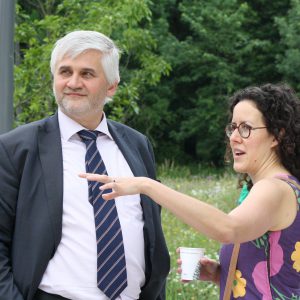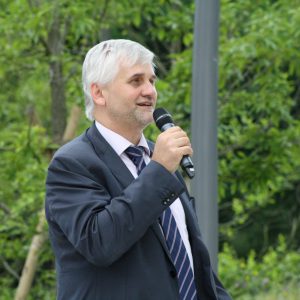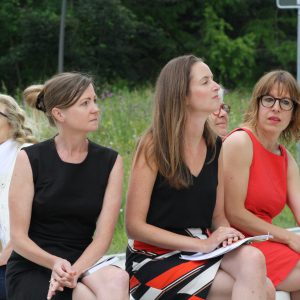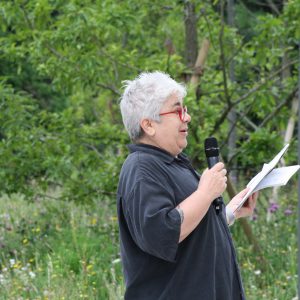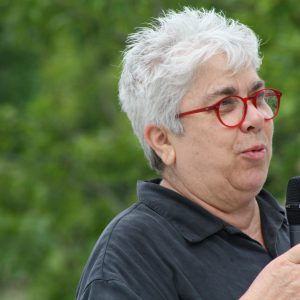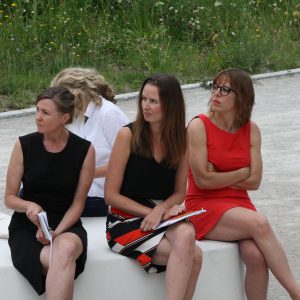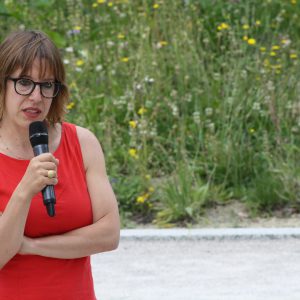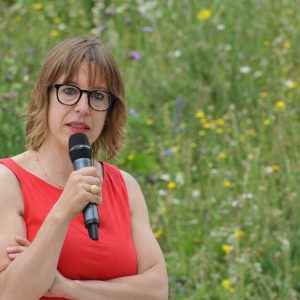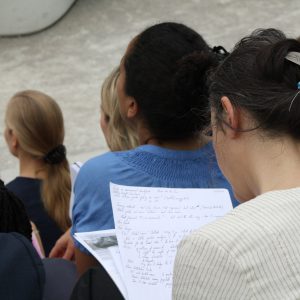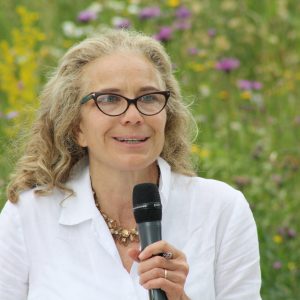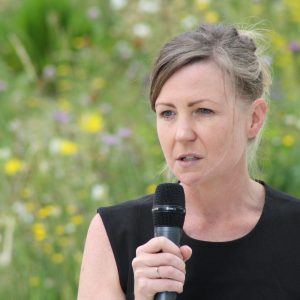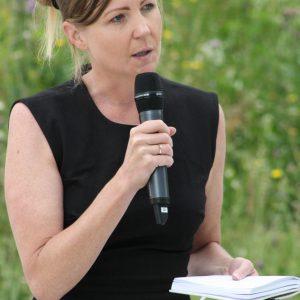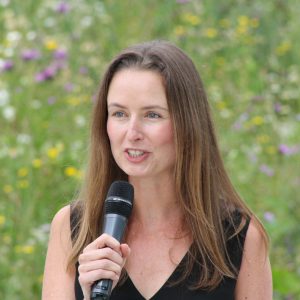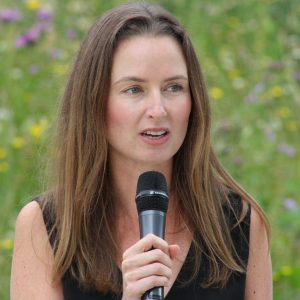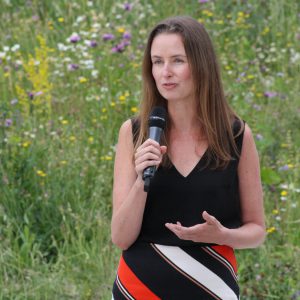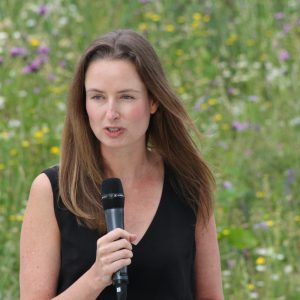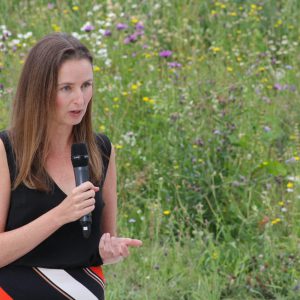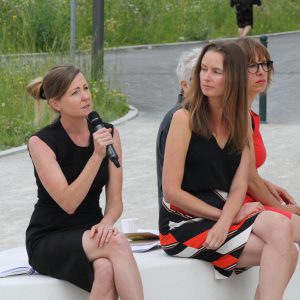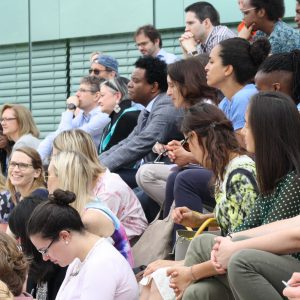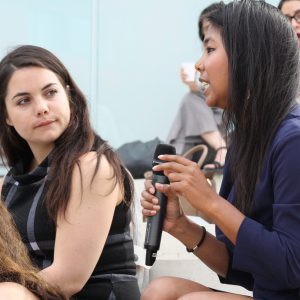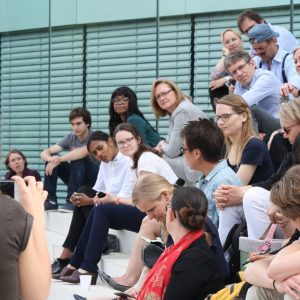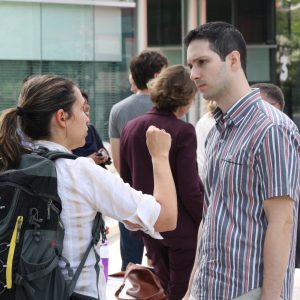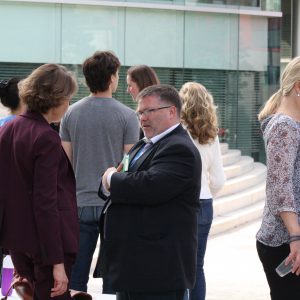Événement
Gender and Environment Breakfast
This event co-organised by Women@thetable, UN Environment and the Geneva Environment Network Secretariat took place on Wednesday 31 May, at Maison de la Paix. It was one of the various events taking place in Geneva to celebrate World Environment Day and the European Sustainable Development Week.
Breakfast Discussion Agenda
The breakfast event included a discussion on the Global Gender and Environment Outlook with the lead author, co-authors and guests, moderated by Caitlin Kraft-Buchman, the Executive Director of Women@TheTable and co-founder of the the International Gender Champions.
The lead author of the report, Joni Seager, is an activist and scholar in feminist geography, gender & environment, and global environmental policy. Joni is Professor and Chair of the Global Studies Department at Bentley University in Boston, Massachusetts. She is the author of many books, including four editions of the award-winning Atlas of Women in the World, two editions of The State of the Environment Atlas.
Other discussants
Elena Villalobos Prats is responsible for capacity development and country support in the Climate Change and Health team at the World Health Organization. Elena has developed guidance and training materials on gender, climate change and health, and was a contributing author to the 2016 Global Gender and Environment Outlook.
Sarah Leugers is the Director of Communications at Gold Standard. Gold Standard works with developers in Africa and Asia to develop and certify ‘cleaner cookstoves’ projects, which empower women and provide a number of economic, educational and social opportunities.
Seline Meijer has been working for the People in Nature (PiN) initiative at IUCN, focusing on systematic data collection, analysis and documentation for landscape level assessment of people’s material uses of nature.
Opening Remarks
Jan Dusik, Director, Europe Office, UN Environment, International Gender Champion – Geneva
Summary
Caitlin Kraft-Buchman
- The purpose of this event is to draw clear lines between Gender Policy and more robust outcomes in the battle against climate change. What are the links? Why are these links critical? How can a gender approach make us more effective? For those who are not from the environment field, how can they apply some of these principles in their work?
Jan Dusik
- This event is part of a series of events taking place in Geneva and around the world to celebrate World Environment Day. The these this year is connecting #WithNature, and this outdoor event is an excellent way of connecting with nature.
- This is the first discussion taking place in Europe on the Global Gender Environment Outlook (GGEO) Report.
- The Geneva Gender Champions Network has been turned into a Geneva Chapter for International Gender Champions as this network is now spreading across the world. New York, Bonn, Nairobi and other duty stations are also developing their chapters.
- UN Environment is now in the final part of production of the Global Environment Outlook 6 and it is important to have gender as part of the global outlook.
Caitlin Kraft-Buchman
- It is part of the agenda today is to figure out why most feminists would say they are environmentalist but we don’t know that most environmentalist would say they are feminists.
- It is fundamental to understand how we can make the linkages between these two powerful and deep movements to move this equality and justice agenda forward faster.
Joni Seager
- The UN Environment Global Environment Outlook (GEO) report is issued every four years on the state of the environment. Until now, GEO has been limited to the physical world and a technical assessment of the environment, but there’s very little social analysis and gender analysis in these reports – although GEO 4 started to include it still at a very slow pace.
- In 2012, at the Rio+20 meeting, the Network of Women Ministers and Leaders of the Environment (NWMLE), passed a mandated asking UN Environment to produce the next GEO report entirely from a gender lens.
- UN Environment assembled a large team of authors and contributors, about 100, to produce the Global Gender Environment Outlook.
- The report is a synthesis, so it does not include new research, it pulls together the best of what we know about relations on gender and the environment.
- The report gives to policy makers a basis. It is not an end point, but a beginning point to bring gender into environment, to change the analytical framework and shift specific questions. For example, instead of asking “What is happening to the environment and why?” we will ask “What social forces are producing changes in the environment that we see? Are those social forces gendered?”. Other example not only ask “Who applies pesticides and is therefore directly exposed?” but also “Who washes the pesticides-contaminated clothes and is there an indirect exposure pathway?”.
- The Sustainable Development Goals (SDGs) are important to all of us in moving forward the gender and environment efforts. We have also to figure out who is the “no one” in the “leaving no one behind”. Environment and Gender in the SDGs operate in different tracks. There is only one SDG target linking both.
Elena Villalobos Prats
- Ensuring health impacts are well understood in relation to climate change is complex and it is even more complex when trying to understand if these impacts are equally distributed, how it affects different groups inside the population – for instance men, women or children. Gender analysis is the most important tool used, helping to define what are the more important measure that need to be implemented to protect these populations.
- The health impact can be different because of biological differences between men and women – for instance pregnant women can be more vulnerable to certain epidemics such as malaria. Pregnant women exposed to heat stress, etc.
- One of the main problem is that the data is not collected and presented in a way that allows us to apply a gender distinction in health consequences. Data is not reported in way that helps understanding what is going on. We need data with a better level of detail.
- If we focus on the European heatwave of 2003 (20’000 deaths), it turns out that women were more vulnerable than men but if we focus on working age individuals, men were more affected because they are more represented than women at work. In the Chicago heatwave of 1995, men were more vulnerable because they didn’t have the social network to support themselves. Level of detail is very important to be able to have these findings and take adequate measures to protect populations.
- More recent studies show that in Mexico women were more vulnerable, while in Sao Paolo and Bogota, men were more vulnerable. But in many places around the world you don’t have access to the sufficient level of data to make this kind of analysis. WHO tries to make sure when doing their gender analysis at country level that they can get this level of data.
Sarah Leugers
- Gold Standard was founded in 2003 by different NGOs including WWF, to certify climate protection projects by insuring that climate protection programmes are effective and how finance can help their implementation. Gold Standard has included the gender perspective by making sure that climate mitigation projects are not exacerbating gender inequalities on the ground. At the impact level, the benefits to gender have been listed as co-benefits to the carbon offsets.
- These co-benefits such as transforming lives of women who don’t have to look for fuel wood, saving lives from improved air condition, are the benefits the people who buy carbon benefits talk about.
- Building on what has been more effective and how to maximise projects on the ground, Gold Standard is working on a new standard to be launched next month, bringing gender to the core of the project design process. Project designers have to answer question such as “What are the barriers preventing women from accessing project design and participate in projects? What are the opportunities that we can maximize?”
- At the impact quantification level, where we can drive finance, Gold Standard is introducing a new matrix to attract finance beyond the carbon metric, looking at women empowerment, economic empowerment, reduction of unpaid work, etc. Gold standard is looking at bringing new funding streams to climate protection projects so that gender is core to that and can have an amplifying effect in project success on the ground and meeting SDG5.
Seline Meijer
- For decades IUCN has been ahead of the curve when it comes to gender equality and recognizing how it is a real driving force when it comes to effective, profitable and sustainable conservation.
- Since 1984, IUCN has made gender and women issues a priority, through decisions taken by IUCN Members assembly, World Conservation Congresses, etc.
- Since 1998, IUCN has a Gender Policy and Action Plan, regularly updated and revised.
- Currently, IUCN has one of the largest and most technical diverse gender teams of any international environmental organization.This team supports its members, projects and partners in understanding the role of women and implementing gender sensistive approaches to achieve successful conservation outcomes.
- The Environment and Gender Information Platform (EGI) is one of the flagship projects of IUCN Gender Team. It was initiated by IUCN in 2012 in the Himalayas, where the gender team was facilitating a national multi-stakeholder process in Nepal to develop a climate change gender action plan. It started by the question of a woman “How can I know if my government is abiding to the national and international commitments it has done on gender and environment?”. EGI was therefore developed to identify which government was abiding international and national gender commitments related to the environment. (http://genderandenvironment.org/egi/)
- The EGI is highlighting gender inequalities and data gaps. For example, for more than half of the countries in the world there were no disaggregated data that could be included in the first report. EGI is now a knowledge platform aiming at filling the data gaps.
- The EGI is now a resource to influence, encourage and assist governments and civil society, policymakers and practitioners, academia and advocates, donors and the media to propel gender-responsive environmental policy, practice and communication. From measuring women’s participation in environmental decision-making spheres to examining the extent to which gender considerations are taken into account in major national initiatives and reporting, EGI knowledge products serve as tools across frameworks and sectors— building knowledge, measuring commitments and enhancing accountability.
Documents
Videos
This event was live on facebook.



